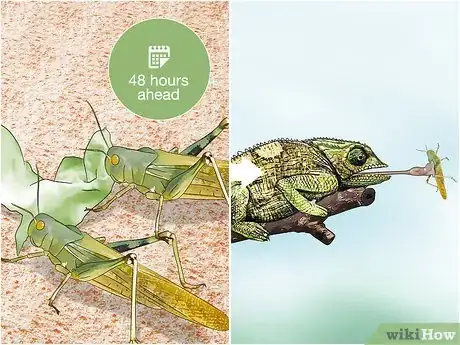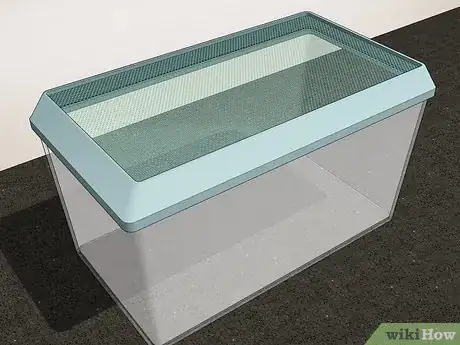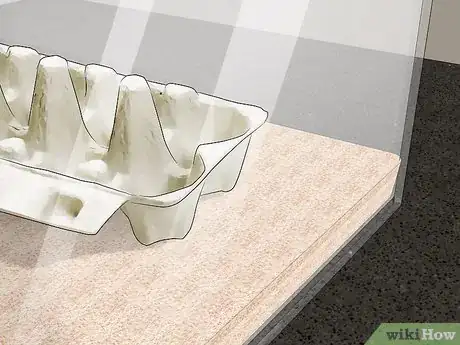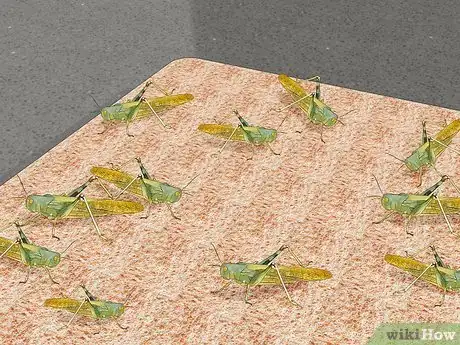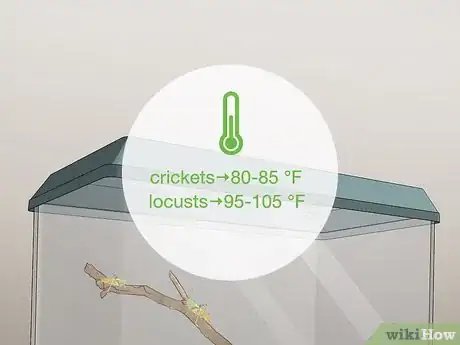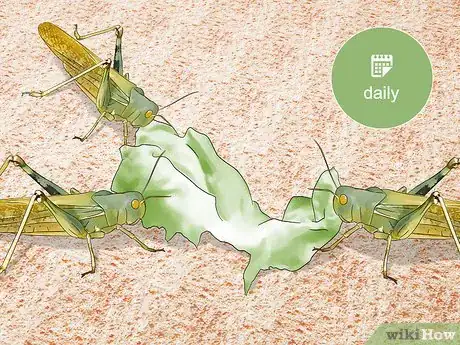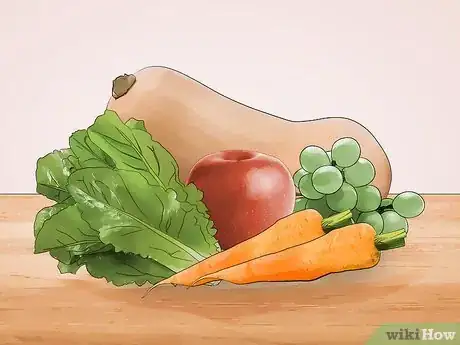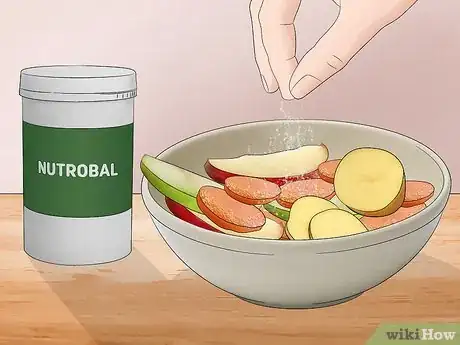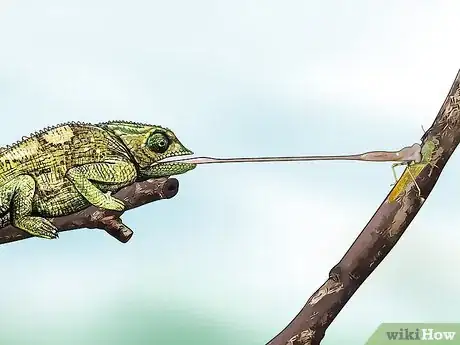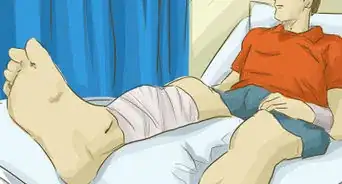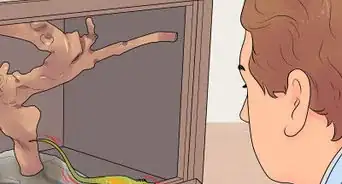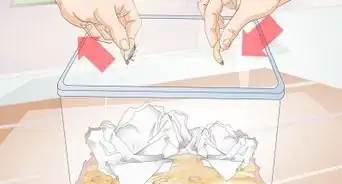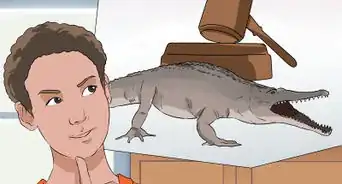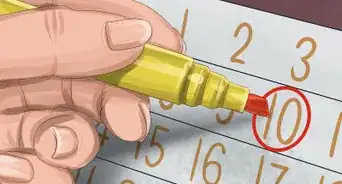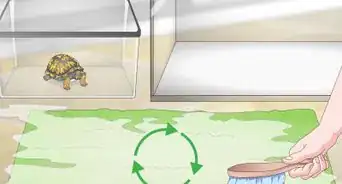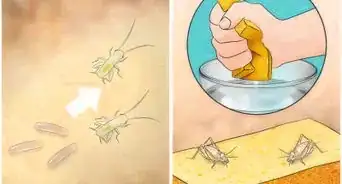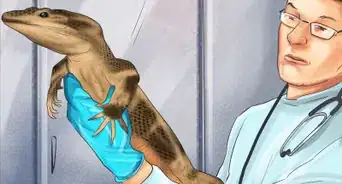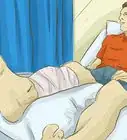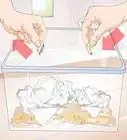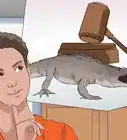This article was co-authored by Pippa Elliott, MRCVS. Dr. Elliott, BVMS, MRCVS is a veterinarian with over 30 years of experience in veterinary surgery and companion animal practice. She graduated from the University of Glasgow in 1987 with a degree in veterinary medicine and surgery. She has worked at the same animal clinic in her hometown for over 20 years.
wikiHow marks an article as reader-approved once it receives enough positive feedback. In this case, 100% of readers who voted found the article helpful, earning it our reader-approved status.
This article has been viewed 33,831 times.
Reptiles such as bearded dragons, chameleons, and geckos are increasingly popular as pets. However, keeping them in optimal health requires a knowledgeable owner who has researched the ideal temperature range in the vivarium, safe substrates, and the correct diet for their reptile. Feeding a nutritious diet is more complicated than offering the right species of insects to your reptile. Sick and partially-dehydrated locusts or crickets, with empty guts that are in poor health themselves, represent poor nutritional value for the reptile. To get around this, the trick is to 'gut load' locusts and crickets so they are in optimum health when eaten by your reptile.[1]
Steps
Preparing to Gut Load
-
1Buy insects ahead of time. As the words suggest, gut loading is about filling the insect's gut with healthy nutritious foods. In turn, when the plump, juicy insects packed with minerals and vitamins are eaten by the reptile, they represent great nutrition for the hunter.[2] This gut loading takes time, however, so you need to have the insects a few days before they are to be fed to your reptile.
- If you order live food by mail, the stress of going through the postal service means the insects are in poor health when they arrive through your letterbox. Therefore, try to plan ahead so that you can feed the insects for at least 48 hours before feeding them to the reptile. This allows them to recover, rehydrate, and be nutritionally more beneficial.
-
2Choose a faunarium. It's important to equip yourself with a suitable container to keep the locusts and crickets in. The plastic tubs they travel in are too small to keep them in for gut feeding or for the longer term.[3] Faunarium is the term used for containers used to house reptiles and other small pets, but they can also be called terrariums or reptile tanks. They consist of a clear tank or box, with a plastic lid with multiple breathing holes in it.[4]
- The larger faunarium, the better, so that the insects have space to get away from one another.
- Commercial faunariums are inexpensive and widely available on the internet or from reptile shops. They have an access hatch which flips open for you to remove individual insect with tweezers, without the need for removing the whole of the lid. This design makes for good ventilation, plus they are easy to clean and disinfect between batches of insects.
- If you don't have a faunarium you can improvise with a plastic container, such as a 2-liter plastic ice-cream tub. Be sure to punch multiple holes in the lid so it is well ventilated.
Advertisement -
3Prep the faunarium. Line the bottom of it with layers of disposable paper towel. Make the space comfortable for the insects by providing some hiding places for the locusts or crickets, such as the egg cartons that come in the traveling packs.
- If there is bran in the travel pack, it's fine to dump that into the faunarium as well.
Gut Loading Insects
-
1Place the insects into the faunarium. Do not mix species in the same faunarium.[5] They have different needs and can compete for resources if kept together.
-
2Keep the faunarium at a comfortable room temperature or above. Insects kept in cool or cold conditions will not adequately digest what they have eaten and it could ferment in their gut. This can potentially disagree with the reptile that eats them.
- Crickets prefer 80 - 85 F and locusts prefer slightly warmer temperatures, at 95 -105F.
- Avoid the faunarium becoming humid or overly damp, as this encourages the growth of potentially harmful bacteria.
-
3Feed the insects daily. Put a supply of nutritious food in the faunarium, but do not put in more than they can eat in a day. Wash all foods prior to putting them in, as the residual moisture on the food provides all the water the insects will need.
- Avoid leaving rotting foods in the faunarium. Remove any leftover food at the end of each day and replace it with fresh.[6]
-
4Feed the insects a healthy diet. The goal of gut loading is to make the insects healthy so that your reptile is eating healthy food when it eat them. Good foods to offer the insects include cabbage, spring greens, romaine lettuce, apples, half green grapes, butternut squash, potatoes, sweet potatoes, and any other fresh fruit or vegetables that are safe for your reptile to eat.
- Note that avocado is toxic to many reptiles and not a suitable meal for livefood.[7]
- Alternatively, you can buy commercial 'gut loading' foods or gels from reptile shops, that are high in vitamins and minerals. These have no real advantage over feeding of good quality fresh foods, except some of these foods are fortified with calcium.
-
5Supplement the insects diet with calcium. Extra calcium is a good idea, since pet reptiles are often at risk of developing MBD (metabolic bone disease) as a result of low levels of calcium in the diet or inadequate UVB lighting (which the metabolism needs to process the calcium). A simple way to make sure the reptile takes in plenty of calcium is to sprinkle a calcium supplement (such as Nutrobal, sold through reptile shops) onto the fruit and veg fed to the insects.
- Experts disagree about how effective this is at supplementing the reptile, since some argue the calcium stays within the locusts or crickets gut, but it seems there is no harm to be done by doing this. However, to be on the safe side also dust the live food with calcium powder immediately prior to feeding to the reptile.[8]
-
6Selectively feed gut loaded insects to your reptile. Be sure only to feed healthy looking insects to your reptile. Remove any dead insects from the faunarium and don't give them to your reptile.
References
- ↑ http://exoticpets.about.com/cs/reptilesgeneral/g/gutloading.htm
- ↑ http://exoticpets.about.com/cs/reptilesgeneral/g/gutloading.htm
- ↑ http://www.mybeardeddragons.co.uk/livefood.html
- ↑ http://www.thereptilian.co.uk/the_reptilian_glossary.html
- ↑ http://www.mybeardeddragons.co.uk/livefood.html
- ↑ http://www.mybeardeddragons.co.uk/livefood.html
- ↑ http://exoticpets.about.com/cs/reptilesgeneral/g/gutloading.htm
- ↑ http://exoticpets.about.com/cs/reptilesgeneral/g/gutloading.htm
About This Article
To gut load locusts and crickets for your reptile, feed them a healthy, varied diet that consists of fruits and vegetables, like cabbage, greens, lettuce, apples, and sweet potatoes. Just make sure the food you're giving them is safe for your reptile to eat. You should also sprinkle a powdered calcium supplement over the fruits and vegetables so the insects are getting more calcium, which will help prevent a calcium deficiency in your reptile. Additionally, keep your insects in a warm environment, since cold temperatures can prevent insects from digesting their food properly. For advice from our Veterinary co-author, like how to choose a habitat for your crickets and locusts, read on!
